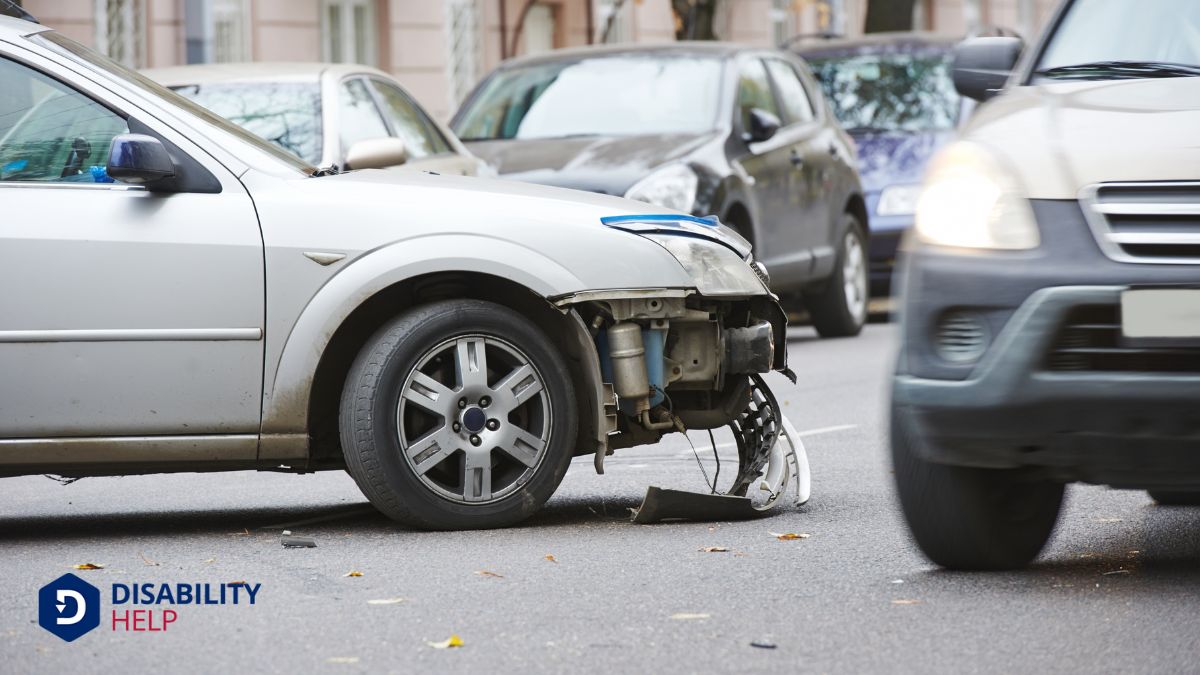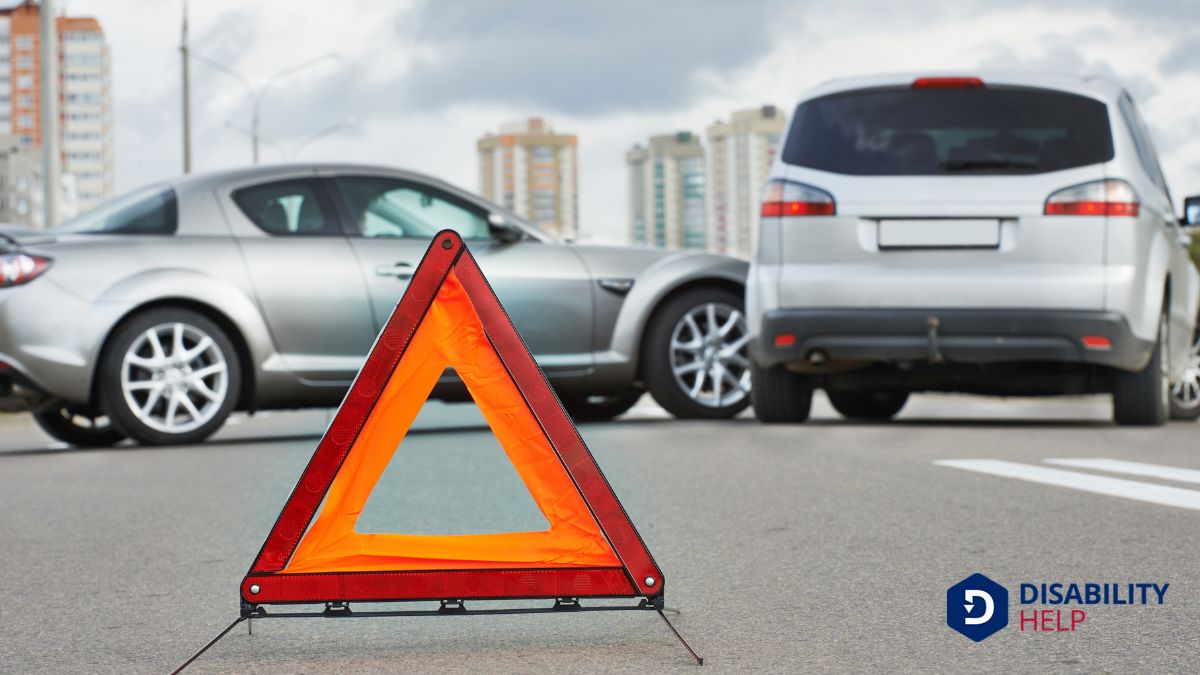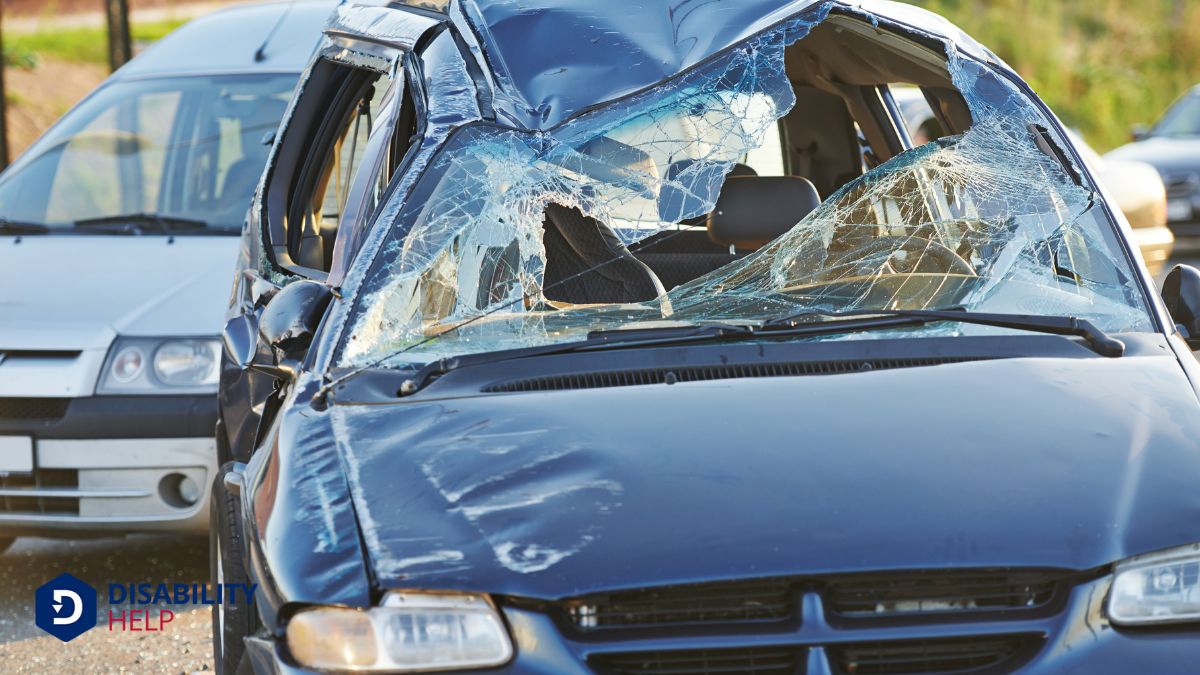When it comes to car accident injuries, we're dealing with a system where fault and negligenceA legal concept where a party fails to exercise reasonable care, resulting in harm to another person... play essential roles. In Texas, the at-fault driver is financially responsible, so proving their negligence is crucial. We should gather evidence like police reports and witness statements, and hiring a skilled lawyer can make all the difference. Car owners can also be liable if they knowingly let an unskilled driver use their vehicle. Additionally, car manufacturers might be responsible if vehicle defects contributed to the accident. If you're unsure who's liable or you need more details on protective steps, stick around.
Key Takeaways
- Liability for car accident injuries in Texas is determined by fault and negligence.
- Car owners can be liable for accidents due to negligent entrustment.
- Manufacturers may be liable for accidents caused by vehicle defects.
- Evidence like police reports and witness statements is crucial for proving fault.
- Legal representationThe way people with disabilities are depicted in media, culture, and politics, often influencing pub... helps establish liability and negotiate compensation.
Texas Fault Laws

When it comes to car accidents in Texas, the state's fault laws kick in to determine who's responsible for the financial fallout. Under these laws, the party at fault for causing the accident must compensate the injured parties for their car accident injuries. This means that, in Texas, liability is tied directly to negligence; if another driver's carelessness led to the accident, they're financially responsible.
Texas motorists are required by law to carry liability insurance. This insurance covers bodily injury and property damage, ensuring that victims can receive compensation. However, to actually recover these costs, we need to prove the other driver's fault.
This typically involves demonstrating their negligence, such as reckless driving or ignoring traffic signals.
Engaging an experienced Texas car accident lawyer can be essential in this process. A skilled lawyer helps investigate the accident, gather evidence, and establish liability. They know how to navigate the complexities of fault laws and can greatly improve our chances of securing fair compensation.
Proving Fault in Texas
Proving fault in Texas car accidents is essential for securing financial compensation. When we're involved in a car accident, establishing who's at fault is the key to maneuvering the insurance claims process and receiving the financial support we need for recovery. Texas law places the burden of proof on us to show that the other driver was negligent. Here's how we can go about it:
- Gather Evidence: Collect police reports, photos of the accident scene, and witness statements. These pieces of evidence are vital to proving fault.
- Hire a Skilled Attorney: A knowledgeable attorney can investigate the claim, gather necessary documents, and help us establish negligence.
- Engage Expert Witnesses: Specialists like accident reconstruction experts can provide testimony that supports our case and helps establish liability.
- Document Everything: Keep detailed records of medical treatments, repairs, and any communication with insurance companies.
Without solid proof of the other driver's fault, obtaining financial compensation can be challenging. By following these steps, we strengthen our position under Texas law and increase our chances of a favorable outcome. Remember, the more thorough our proof of fault, the better our opportunity to secure the compensation we deserve.
Driver Responsibility
Understanding driver accountability is pivotal in determining who's liable for car accident injuries. In Texas, drivers are typically accountable for damages if they breach their duty of care on the road. This means motorists must operate their vehicles with attention and caution to avoid causing accidents and injuries. If a driver fails to fulfill this obligation, they can be held at fault for the accident and responsible for causing the injuries that result.
To determine liability, we need to prove that the other driver didn't meet their duty of care. This might involve demonstrating that they were distracted, speeding, or otherwise negligent. Our attorney will work diligently to show how the other driver's actions or negligence led to your injuries. Successfully proving the driver's fault and establishing liability is essential for obtaining compensation under Texas fault law.
Driver accountability plays a significant role in car accident cases. By understanding the importance of this concept, we can better navigate the complexities of determining who's liable for damages. Knowing the driver's fault helps guarantee that the right party is held accountable, enabling us to seek the justice and compensation we deserve.
Car Owners Liability

Let's explore how car owners can be held liable for accidents, especially when they negligently entrust their vehicle to an incompetent driver. In Texas, insurance follows the car, making owners responsible for any damages caused. Establishing that the owner should have known about the driver's incompetence is vital in these cases.
Negligent Entrustment Explained
When it comes to car accidents, the notion of negligent entrustment can really shake things up for vehicle owners. Fundamentally, negligent entrustment occurs when a car owner allows an incompetent or reckless driver to use their vehicle, resulting in an accident. Under Texas law, car owners can be held liable if they knew or should have known about the driver's incompetence.
In these cases, liability extends to car owners for several reasons:
- They entrust their vehicle to someone with a history of reckless driving.
- The driver has prior DUI convictions.
- The owner knew of the driver's incompetence and still allowed them to drive.
- Car owners' responsibility can help maximize compensation for accident victims.
Insurance Responsibility Overview
Shifting our focus from careless entrustment, let's examine how insurance responsibilities play out for car owners in Texas. When it comes to insurance responsibility, Texas law is clear: liability insurance typically follows the automobile, not the driver. That means if the car owner lends their vehicle to someone else and an accident occurs, the owner's insurance will generally be the primary coverage.
Car owners can be held liable for negligently entrusting their vehicle to an unskilled driver. This means proving that the owner should have known about the driver's incompetence is essential in establishing liability.
If we can demonstrate that the car owner was aware, or should have been aware, of the driver's inability to operate the vehicle safely, the owner can be held accountable.
Holding all negligent parties accountable, including the car owner, can maximize compensation claims. An experienced attorney will work diligently to establish the liability of all involved parties in a car accident case.
Manufacturer Defects
Let's talk about how manufacturer defects can impact liability in car accidents. Identifying issues like faulty tires, brakes, or airbags is essential for proving that defects contributed to an accident.
With the help of experienced attorneys, we can gather evidence to hold manufacturers accountable for their negligence and guarantee victims receive fair compensation.
Identifying Vehicle Defects
How can we identify vehicle defects that might make a manufacturer or repair shop liable for car accident injuries? Recognizing vehicle defects is vital in establishing liability in cases of manufacturer defects. These defects can range from faulty tires to malfunctioning brakes, and understanding them can be the key to seeking compensation.
To effectively identify and prove liability for car accident injuries caused by vehicle defects, we should look for the following:
- Faulty Safety Features: Weak roof protection or inadequate crash protection systems can be significant indicators of manufacturer defects.
- Malfunctioning Components: Defective airbags, brakes, or other essential components can lead to serious accidents and injuries.
- Design Flaws: Elements that compromise vehicle safety, such as poor crash protection systems, are grounds for auto product liability.
Maintenance Records: Documenting regular maintenance and repairs can help establish whether the defect was due to the manufacturer or a repair shop.
Experience in handling auto product liability claims is critical in proving the manufacturer's responsibility for injuries caused by defects. By identifying these vehicle defects, we can hold third parties accountable, ensuring that manufacturers or repair shops are liable for the car accident injuries resulting from their negligence.
Legal Liability for Defects
When it comes to legal liability for defects, manufacturers can indeed be held accountable for injuries caused by their faulty products. If a vehicle's defective components, like faulty tires or malfunctioning airbags, result in an accident, the manufacturer may be liable for the injuries sustained. This type of liability falls under product liability law, which aims to guarantee that consumers are protected from unsafe products.
To establish liability, we need to identify and prove the defect. This can be challenging, but it's essential for holding manufacturers accountable.
In many cases, experienced attorneys play a crucial role in navigating the complexities of auto product liability claims. They help us gather evidence, such as design flaws or weak roof protection, to build a strong case against the manufacturer.
We should also consider that third parties, like repair shops or component manufacturers, might share liability if their actions contributed to the defect. Seeking legal assistance helps us understand these nuances and ensures that all responsible parties are held accountable.
Evidence of Manufacturer Negligence
Establishing evidence of manufacturer negligence in vehicle defects is necessary for holding them accountable for the resulting injuries. When car accident injuries occur due to faulty airbags, tires, or other components, it's crucial to pinpoint the exact defect. By identifying these vehicle flaws, we can lay the groundwork for strong product liability claims. Design defects, such as inadequate roof protection, can further establish manufacturer responsibility.
To successfully pursue these claims, we need:
- Detailed accident reports: These provide a thorough overview of the circumstances and defects involved.
- Expert testimonials: Specialists can confirm the presence and impact of design flaws or production errors.
- Documented vehicle history: Maintenance records and prior recalls can highlight recurring issues.
- Photographic evidence: Visual proof of the flaws can be persuasive in court.
It's clear that legal representation plays a crucial role in handling these complex product liability claims. Experienced attorneys can effectively argue that manufacturer negligence contributed to the accident and subsequent injuries.
Evidence Collection
Collecting evidence is a crucial step in proving liability for car accident injuries. We need to gather thorough evidence like photos, videos, and witness statements to build a strong case. Police reports are essential, as they provide an official account of the accident and can greatly influence the establishment of liability. Medical records, too, are vital in demonstrating the extent of car accident injuries and their impact on our lives.
Expert witnesses can be invaluable in these cases. They analyze the evidence and offer professional opinions that can help establish liability. For example, an accident reconstruction expert might explain how the collision occurred, supporting our claim for compensation. Similarly, medical experts can attest to the severity of our injuries and the necessary treatments.
Witness testimony adds another layer of support to our case. Eyewitnesses can provide firsthand accounts of the accident, which can corroborate our version of events.
Collecting all this evidence isn't just about proving who's at fault; it's about ensuring we receive the compensation we deserve for our car accident injuries. Thorough evidence collection is the cornerstone of a robust legal claim.
Comparative Negligence

In Texas, understanding comparative negligence is vital for determining compensation in car accident cases. Under the modified comparative fault rule, you can still pursue compensation for your injuries even if you're partially at fault, as long as your percentage of fault doesn't exceed 50%. Here's how it works:
- Percentage of Fault: Your damages will be reduced by the percentage of fault assigned to you. For instance, if you're 30% at fault, your compensation is decreased by 30%.
- 50% Rule: If you've found more than 50% responsible for the accident, you won't be eligible for any compensation.
- Evidence from the Accident: Proper documentation and evidence from the accident scene can greatly impact the determination of fault.
- Compensation for Your Injuries: Accurately understanding your percentage of fault helps guarantee you receive the maximum compensation you're entitled to.
It's essential to grasp these details to navigate the complexities of the comparative fault rule. If the other party is more than 50% responsible for paying, you can pursue compensation for your injuries. By understanding and leveraging the modified comparative fault system, you can better manage your case and achieve fair results.
Legal Representation
Securing legal representation is fundamental when dealing with the aftermath of a car accident. Maneuvering through the complexities of proving liability can be overwhelming, and that's where a car accident attorney comes in.
Liability refers to determining who's at fault, which is vital in a fault state like Texas. Understanding Texas laws and how they impact our case can make a significant difference in the outcome.
An experienced attorney can assess the strength of our case and negotiate with insurance companies on our behalf. These professionals know the tactics insurers use to minimize payouts and can counteract them effectively. Having legal representation guarantees, that we're treated fairly throughout the legal process.
Moreover, working with a lawyer can help us maximize our compensation by holding all negligent parties accountable. This is especially important when multiple factors contribute to the accident.
Seeking legal advice early on can prevent costly mistakes and delays, safeguarding we recover compensation as quickly and fully as possible.
Steps After an Accident
After a car accident, the initial moments are essential for safeguarding your health and legal rights. First, let's make sure everyone involved is safe. Check for injuries, and if necessary, call emergency services immediately. Once safety is secured, follow these steps:
- Exchange Information: Gather contact, vehicle, and insurance details from the other driver. Avoid discussing who's at fault for the car accident.
- Document the Accident Scene: Take photos of the vehicles, road conditions, and any visible injuries. This documentation can be critical for your car accident attorneys.
- Notify Your Insurance Company: Report the accident promptly. Be cautious with your statements to avoid affecting your insurance coverage and liability.
- Consult a Personal Injury Lawyer: Schedule a free case evaluation with a lawyer to understand your legal options and prevent costly mistakes.
Frequently Asked Questions
Who Usually Determines Which Party Is Legally Responsible for an Auto Accident?
We usually determine which party is responsible for an auto accident based on evidence from police reports, witness statements, and expert opinions. Insurance companies and legal investigations play significant roles in this process. Seeking legal advice helps us navigate effectively.
Who Is Liable in a Car Accident in Texas?
In Texas, the driver at fault is liable for a car accident. We must prove their fault to receive compensation. Car owners and manufacturers can also be held liable for negligence or vehicle defects.
Who Is Held Liable in Case of Collision?
In a collision, we determine liability by examining negligence, reckless driving, or traffic law violations. The responsible party covers medical expenses, lost wages, and pain. Collecting evidence and seeking legal advice helps us understand our rights.
How Much Can Someone Sue for a Car Accident in Texas?
In Texas, we can sue for damages like medical expenses, lost wages, and emotional distress. The amount depends on the severity and impact of our injuries. Consulting an experienced attorney helps us assess and pursue maximum compensation.
Conclusion
To sum up, handling liability for car accident injuries in Texas involves understanding fault laws, proving responsibility, and collecting evidence. We must consider factors like driver negligence, car owner liability, and potential manufacturer defects. Comparative negligence can impact the result, so having legal representation is essential. After an accident, let's remember to gather all necessary information and consult with professionals to protect our rights and guarantee fair compensation. We're all in this together, so stay informed and stay safe.






